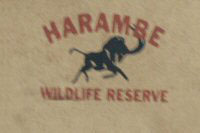

|
Automatische diashow van de foto's op deze pagina
| Walking through the queue area you find yourself in the Harambe Reserve. Overhead TVs explain that poaching has killed many animals. Soon you arrive at the boarding platform, enter your jeep and head into the animal reserve. Your driver begins radio contact with a pilot....and off you and your jeep goes, down the bumpy dirt trail and into Africa! |
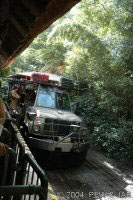
|
| Your driver will point out the various wildlife for you -- but don't count on them to stop for your photo op, most barely pause. Bongos are hiding around the first bend - look quickly or you might miss these shy creatures. |
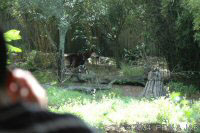
|
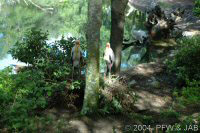
|
| Passing the local watering hole you might see the Black Rhino. On the right, the rare Okapi. |
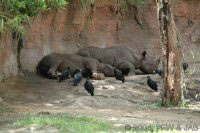
|
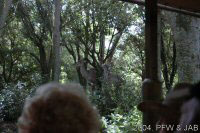
|
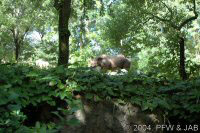
|
| Hippos are at the base of cascading waterfalls. (and alligators) |
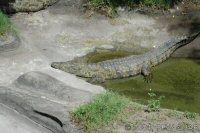
|
| The Vehicle emerges from thick vegetation into the vast savannah grasslands. In this area you might see Giraffes, Sable Antelope, Thomson's Gazelle and Ostriches. The land is very different here and is accented by termite mounds up to 20 feet high. |
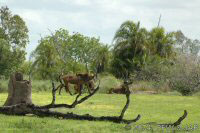
|
|||
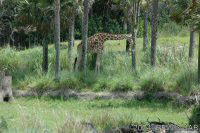
|
|||
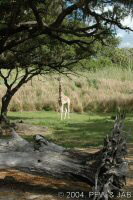
|
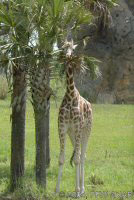
|
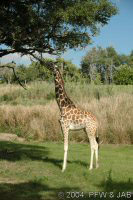
|
|
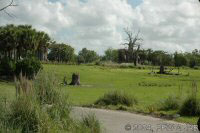
|
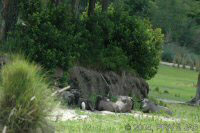
|
||
| On the left is a huge rock formation where the Mandrill Baboon family lives. Around the next bend are the Elephants. The radio contact picks back up as the pilot searches for Big Red and Little Red (elephants). The ancient baobab trees can be found in this area.... |
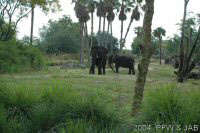
|
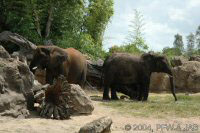
|
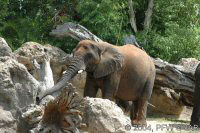
|
| Pink Flamingoes inhabit a tiny island that legend says is in the form of a "Hidden Mickey". |
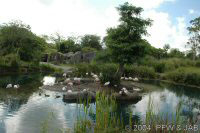
|
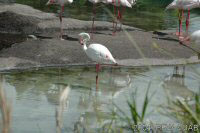
|
| More watering holes, you might see the white rhinos wallowing in the mud. There are other hoofed animals: the kudu, scimitar-horned oryx and the long-horned eland along with sharp-eyed cheetahs up there among the rocks. " |
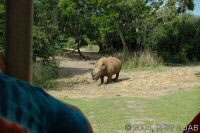
|
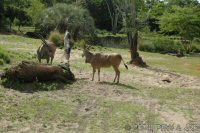
|
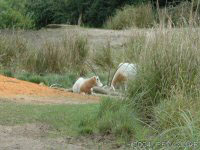
|
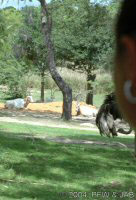
|
| Coming around the last bend, your attention will quickly be drawn to the high rock formation on your left, where the King and Queen of the Savanaah reside...the Kopje Lions. Lions do spend the majority of their day sleeping; so don't expect to see much activity. |
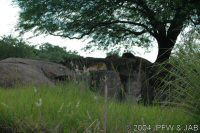
|
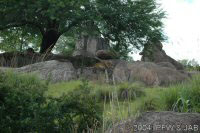
|
| The warthogs start to ramble across the field when the radio comes on again to alert your driver to poachers in the area. |
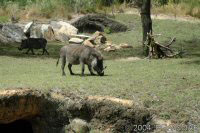
|
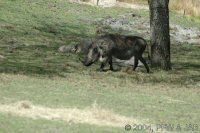
|
| The jeep takes off, you hear gunshots and smoldering campfires. Finally, the poachers are in custody! The pilot waves to you and you'll find that Little Red is safe! |
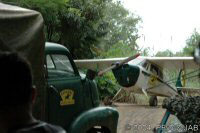
|
| This is when your safari comes to an end, as the vehicle rejoins the main roads and the Park Ranger Station comes into view. |
|
TOURING TIPS
The ride vehicle is 8 feet off the ground enabling you to wind your way through the grasslands and waterways of the Savanah. 32 passengers fit in this all terrain truck with a driver for your guide. The drivers are trained to spot the animals along the Safari and point them out to you. Photography, however, is a challenge, as the vehicle stops momentarily at best. Some padding has been added to the seat bottoms and tops recently, a nice improvement from bumping along on hard plastic. Unfortunately when the padding was added, the photo identification charts of the animals was put overhead. This makes it very difficult for children to view. |
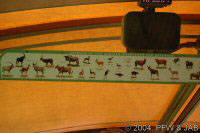
|
Sammantha finished a six-month tour working at Disney's Animal
Kingdom and offers some "insider tips":
INTERESTING FACTS
www.AllEarsNet.com |
|
|
Homepage Florida 2004 |
Mickey's Jammin'Jungle Parade
|
|
|
||